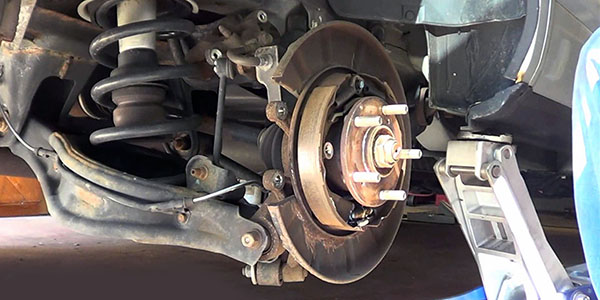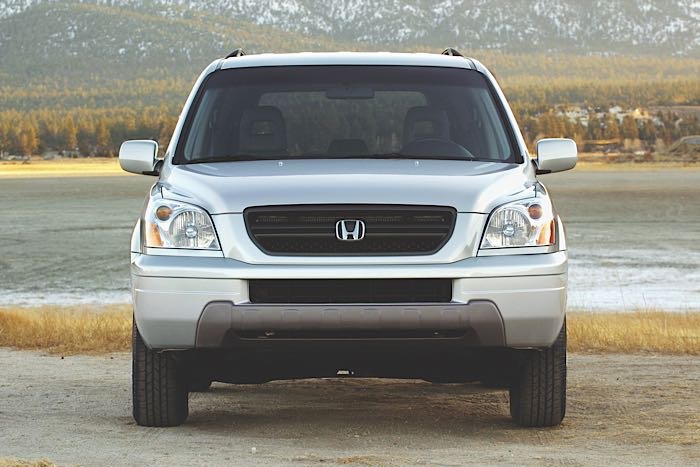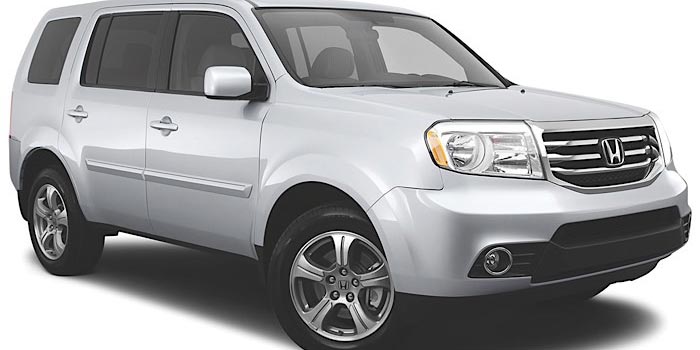Honda Pilot 2003-2008 Brake Job
Honda’s first generation Pilot was one of the first mid-sized crossover SUVs on the market and was designed to fill the demand for SUVs larger than a CR-V that drove like a car. Manufactured in Alliston, Ontario, until production was moved to Lincoln, AL, in 2007, the first generation Pilot shares its platform with the Accord, Odyssey minivan and the Acura MDX. More than 700,000 first-generation Pilots were sold, so there are a lot of them still in service and that need brake maintenance.

Honda Pilot Alignment Specifications (2003-2008)
Aligning the 2003-2008 Honda Pilot is not difficult. The first-generation Pilot shares the same suspension design as the Odyssey and rear suspension design with the Accord. The Pilot is the largest vehicle Honda manufacturers, and has no TSBs issued for alignment or tire-wear problems. Most TSBs for these vehicles focus on steering column noise, but the majority of these are for a limited number of vehicles only.

Brake Job: 2009-2015 Honda Pilot
The second-generation Honda Pilot shares the same platform as the Odyssey minivan and Accord. It also shares a lot of the same complaints concerning “warped” rotors. It is not excess heat that causes brake judder and pulsation, it is lateral runout and disc thickness variation (DTV). The Pilot is sensitive to disc thickness variation. This

Honda Pilot Tech Tip: Rear Suspension Shakes
Model year: 2003-‘04 If a customer brings a 2003-’04 Honda Pilot to the shop with a noise and shake from the rear when turning, the cause and repair of the problem can be simple: The differential fluid may be contaminated by clutch particles, condensation, or both. Contamination will cause the differential clutches to make noise and
Honda Pilot Suspension And Alignment Inspection
The Pilot employs a strut-type front suspension that provides a generous 7.3 inches of wheel travel. Separate load paths to the unit body are provided for the coil spring and the shock absorber to reduce road noise. A solid 0.9-inch stabilizer bar is linked directly to the strut via ball-joint connections to reduce body roll during cornering maneuvers.
2009-’10 Honda Pilot Clicking Noise Coming From the Front Suspension During Acceleration or Braking
If a 2009-’10 Honda Pilot owner complains that the vehicle is making one or more clicking noises from the front suspension while accelerating or braking, it could be due to a faulty front suspension rear lower arm bushing bracket. If this is the case, replace both front suspension rear lower arm bushing brackets, and check the wheel alignment.
Alignment & Suspension Specs: 2003-2008 Honda Pilot
Aligning the 2003-2008 Honda Pilot is not difficult. The first-generation Pilot shares the same suspension design as the Odyssey and rear suspension design with the Accord. The Pilot is the largest vehicle Honda manufacturers. There are no TSBs issued for alignment or tire wear problems. Most TSBs for these vehicles focus on the steering column noise, but most of them are for a limited number of vehicles. The Pilot is based on Honda’s Global Light Truck Platform. It features a highly robust and rigid unit body design with isolated front and rear subframes.
Tech Tip: Solving Noise/Judder in Honda Pilot and Ridgeline Models
Honda Pilot or Ridgeline owners may complain about a noise and judder from the rear when turning. The cause and repair of the problem can be simple. The differential fluid may be contaminated by clutch wear, condensation or both. Contamination will cause the differential clutches to make noise and shake when turning.
Tech Tip: Honda Pilot’s Compressor Clutch Has Taken Off
No A/C compressor clutch. The scan tool says A/C off and A/C switch off. There is no air out of the front vents, but the blower motor operates and changes speeds with the front switch.
Tech Tip: Honda Pilot’s Compressor Clutch Has Taken Off
Owners of Honda Pilots my experience no A/C compressor clutch. The scan tool says A/C off and A/C switch off. There is no air out of the front vents, but the blower motor operates and changes speeds with the front switch. To diagnose this probrlem, ground the blue/red wire at the front blower power transistor and verify the blower motor runs on high speed.Then verify the front blower power transistor ground is good on the black wire – look for 0.05 volts or less to be OK ….
